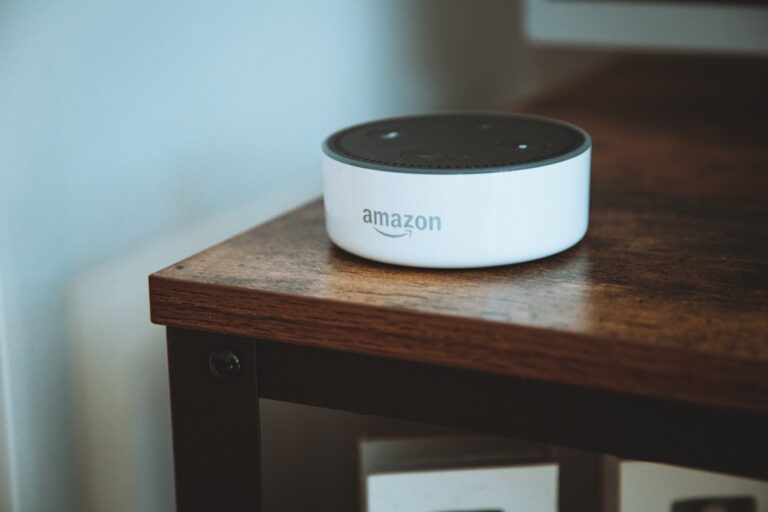The rise of remote work has transformed the landscape of employment, offering flexibility and convenience to millions of workers worldwide. This shift, accelerated by the global pandemic, has led organizations to adopt remote work policies that allow employees to perform their duties from virtually anywhere. While this new paradigm has numerous benefits, it also introduces a host of cybersecurity challenges that organizations must navigate.
As employees connect to corporate networks from home or public spaces, the potential for cyber threats increases significantly. The need for robust cybersecurity measures has never been more critical, as the traditional perimeter-based security model becomes less effective in a remote work environment. Cybersecurity in the context of remote work encompasses a wide range of practices and technologies designed to protect sensitive data and maintain the integrity of corporate networks.
With employees accessing company resources through various devices and networks, the risk of data breaches, phishing attacks, and other cyber threats escalates. Organizations must not only implement technical solutions but also foster a culture of security awareness among their remote workforce. This article delves into the increased risks faced by remote workers, the importance of multi-factor authentication, the use of virtual private networks (VPNs), regular software updates, training for employees, secure password management, and the necessity of monitoring and incident response strategies.
Increased Risks for Remote Workers
Remote workers face a unique set of cybersecurity risks that differ significantly from those encountered in traditional office settings. One of the most pressing concerns is the use of personal devices for work purposes. Many employees utilize their own laptops, tablets, and smartphones to access corporate resources, which may not have the same level of security as company-issued devices.
This practice, often referred to as Bring Your Own Device (BYOD), can lead to vulnerabilities if personal devices are not adequately secured. For instance, an employee’s personal laptop may lack essential security software or may be running outdated operating systems, making it an easy target for cybercriminals. Additionally, remote workers often connect to unsecured Wi-Fi networks in public places such as coffee shops or libraries.
These networks can be breeding grounds for cyberattacks, as malicious actors can intercept data transmitted over unsecured connections. A common tactic employed by hackers is known as “man-in-the-middle” attacks, where they position themselves between the user and the network to capture sensitive information such as login credentials or financial data. The lack of physical oversight in remote work environments further complicates matters; employees may inadvertently expose sensitive information through careless practices, such as leaving documents visible on their screens during video calls or failing to log out of accounts on shared devices.
Importance of Multi-factor Authentication

Multi-factor authentication (MFA) has emerged as a critical component in safeguarding remote work environments against unauthorized access. MFA requires users to provide two or more verification factors before gaining access to a system or application. This additional layer of security significantly reduces the likelihood of unauthorized access, even if a user’s password is compromised.
For example, an employee attempting to log into their corporate email account may be required to enter a password and then confirm their identity through a text message code sent to their mobile phone. This process ensures that even if a hacker obtains the password through phishing or other means, they would still be unable to access the account without the second factor. The implementation of MFA is particularly vital in remote work scenarios where employees may be accessing sensitive information from various locations and devices.
Organizations that adopt MFA not only enhance their security posture but also demonstrate a commitment to protecting their employees and clients’ data. Furthermore, many regulatory frameworks and compliance standards now mandate the use of MFA for accessing sensitive information, making it an essential practice for organizations aiming to meet legal requirements. By prioritizing multi-factor authentication, companies can significantly mitigate the risks associated with remote work while fostering a culture of security awareness among their employees.
Use of Virtual Private Networks (VPNs) for Secure Connections
| Country | Percentage of Internet Users Using VPNs |
|---|---|
| Indonesia | 61% |
| India | 45% |
| United Arab Emirates | 38% |
| Thailand | 37% |
| China | 31% |
Virtual Private Networks (VPNs) play a crucial role in ensuring secure connections for remote workers. A VPN creates an encrypted tunnel between a user’s device and the internet, effectively shielding data from prying eyes. When employees connect to a VPN, their internet traffic is routed through a secure server, making it difficult for cybercriminals to intercept sensitive information.
This is particularly important when accessing corporate resources over public Wi-Fi networks, where data is especially vulnerable to interception. In addition to encryption, VPNs also provide anonymity by masking users’ IP addresses. This added layer of privacy is essential for remote workers who may be concerned about their online activities being tracked or monitored.
Organizations can implement VPN solutions that require employees to connect before accessing any internal resources, ensuring that all data transmitted between the employee’s device and the corporate network remains secure. Moreover, many modern VPN solutions offer features such as split tunneling, which allows users to route specific traffic through the VPN while accessing other sites directly. This flexibility can enhance performance while maintaining security for sensitive operations.
Implementation of Regular Software Updates and Patches
Regular software updates and patches are fundamental practices in maintaining cybersecurity hygiene within remote work environments. Software developers frequently release updates to address vulnerabilities that could be exploited by cybercriminals. When organizations fail to implement these updates promptly, they leave themselves open to attacks that could have been easily prevented.
For instance, a widely publicized vulnerability in a popular software application may be exploited by hackers shortly after its discovery; organizations that do not apply patches risk becoming victims of these attacks. In a remote work setting, ensuring that all employees are up-to-date with software updates can be challenging due to varying levels of technical expertise among staff members. Organizations should establish clear policies regarding software maintenance and provide guidance on how employees can check for updates on their devices.
Automated update systems can also be beneficial; by configuring devices to install updates automatically, organizations can reduce the risk associated with human error. Additionally, regular audits of software versions across all devices can help identify any outdated applications that require immediate attention.
Training and Education for Remote Workers

Training and education are paramount in equipping remote workers with the knowledge they need to navigate cybersecurity challenges effectively. Organizations should implement comprehensive training programs that cover various aspects of cybersecurity best practices tailored specifically for remote work environments. Topics may include recognizing phishing attempts, understanding social engineering tactics, and adhering to secure data handling procedures.
By fostering a culture of security awareness, organizations empower employees to take an active role in protecting sensitive information. Moreover, ongoing education is essential in keeping employees informed about emerging threats and evolving cybersecurity trends. Cybercriminals continuously adapt their tactics; therefore, training should not be a one-time event but rather an ongoing process that evolves with the threat landscape.
Regular workshops, webinars, and simulated phishing exercises can reinforce learning and help employees stay vigilant against potential threats. By investing in training and education, organizations not only enhance their overall security posture but also cultivate a workforce that is proactive in identifying and mitigating risks.
Secure Password Management
Effective password management is a cornerstone of cybersecurity for remote workers. Weak or reused passwords are among the most common vulnerabilities exploited by cybercriminals. Employees often struggle to create and remember complex passwords for multiple accounts, leading them to resort to easily guessable options or reuse passwords across different platforms.
Organizations must encourage best practices for password creation and management to mitigate these risks. One effective strategy is implementing password managers that securely store and generate complex passwords for users. These tools can help employees create unique passwords for each account while alleviating the burden of remembering them all.
Additionally, organizations should enforce policies requiring strong password criteria—such as minimum length, complexity requirements, and regular password changes—to further enhance security. By prioritizing secure password management practices, organizations can significantly reduce the risk of unauthorized access to sensitive information.
Monitoring and Incident Response for Remote Work Environments
Monitoring and incident response are critical components of an effective cybersecurity strategy in remote work environments. Continuous monitoring allows organizations to detect unusual activities or potential breaches in real time, enabling swift action before significant damage occurs. Security Information and Event Management (SIEM) systems can aggregate logs from various sources within an organization’s network, providing insights into user behavior and identifying anomalies that may indicate a security incident.
In addition to monitoring, having a well-defined incident response plan is essential for addressing potential breaches effectively. Organizations should establish clear protocols outlining roles and responsibilities during an incident response scenario. This includes identifying key personnel who will lead the response efforts, determining communication strategies with stakeholders, and outlining steps for containment and recovery.
Regularly testing these plans through tabletop exercises or simulations can help ensure that all team members are familiar with their roles and can respond effectively when an actual incident occurs. By prioritizing monitoring and incident response capabilities within remote work environments, organizations can enhance their resilience against cyber threats while ensuring that they are prepared to respond swiftly and effectively when incidents arise. This proactive approach not only protects sensitive data but also fosters trust among employees and clients alike, reinforcing the organization’s commitment to cybersecurity in an increasingly digital world.
FAQs
What are some common cybersecurity threats for remote workers?
Some common cybersecurity threats for remote workers include phishing attacks, malware, insecure Wi-Fi networks, and unauthorized access to sensitive data.
How can remote workers protect themselves from cybersecurity threats?
Remote workers can protect themselves from cybersecurity threats by using strong, unique passwords, enabling two-factor authentication, keeping their software and devices updated, using a virtual private network (VPN), and being cautious of suspicious emails and links.
What is the importance of cybersecurity awareness for remote workers?
Cybersecurity awareness is important for remote workers because it helps them recognize potential threats, understand best practices for protecting sensitive information, and take proactive measures to secure their digital assets while working remotely.
What are some emerging cybersecurity trends that remote workers should be aware of?
Some emerging cybersecurity trends that remote workers should be aware of include the rise of ransomware attacks, the increasing use of artificial intelligence for cyber threats, and the importance of securing Internet of Things (IoT) devices in a remote work environment.
How can employers support remote workers in maintaining cybersecurity?
Employers can support remote workers in maintaining cybersecurity by providing training on best practices, offering secure tools and technologies for remote work, implementing strong security policies, and regularly communicating about potential threats and updates in cybersecurity.











